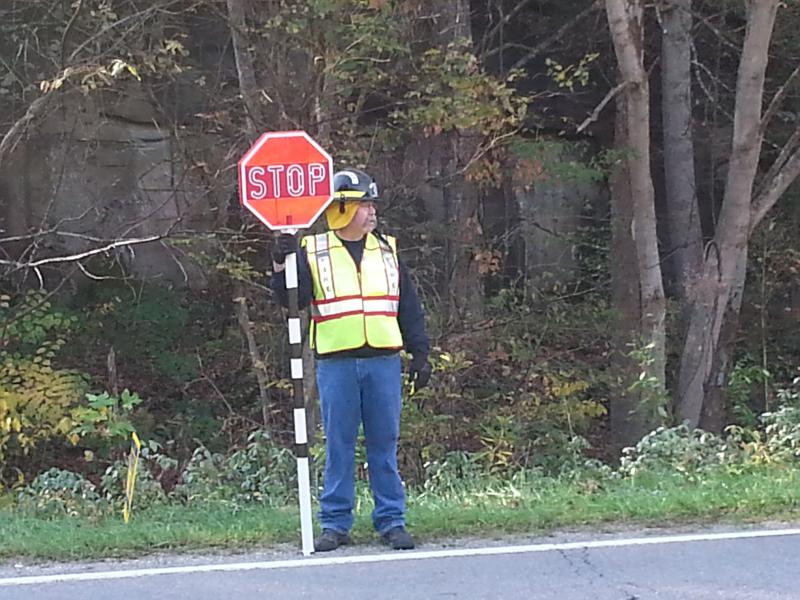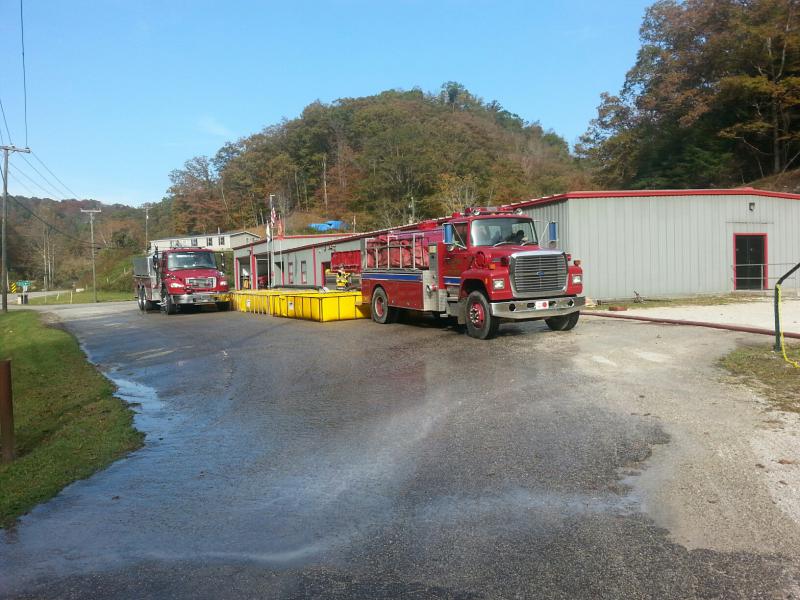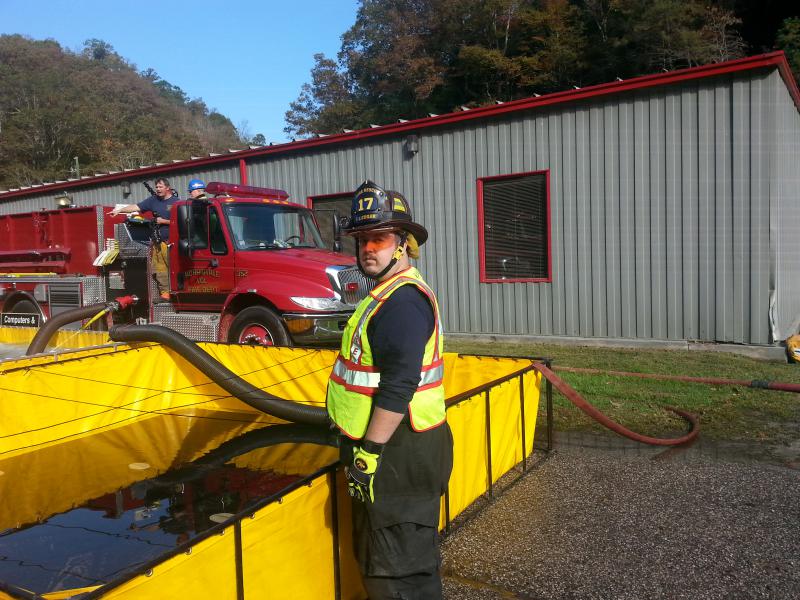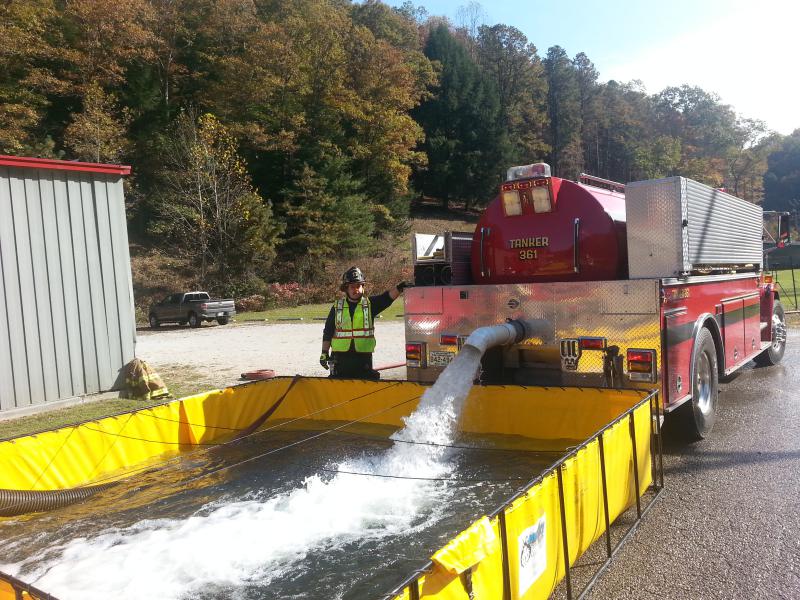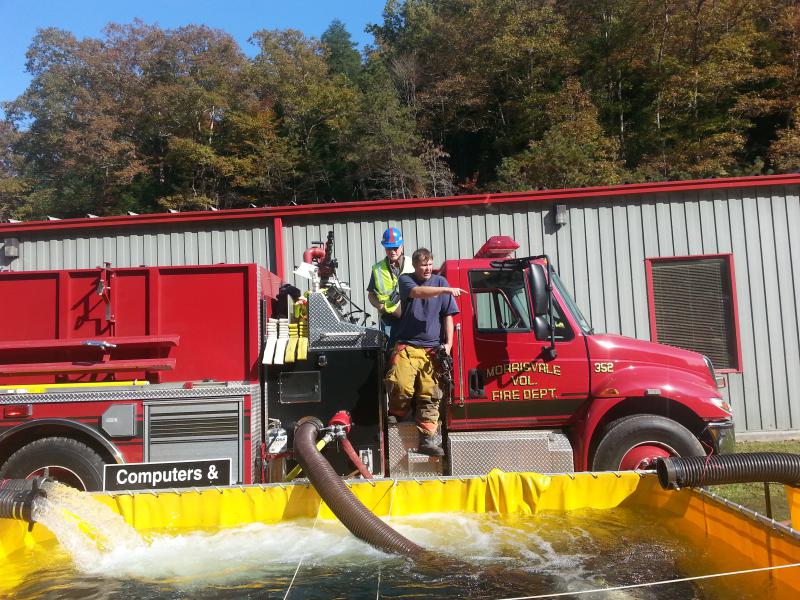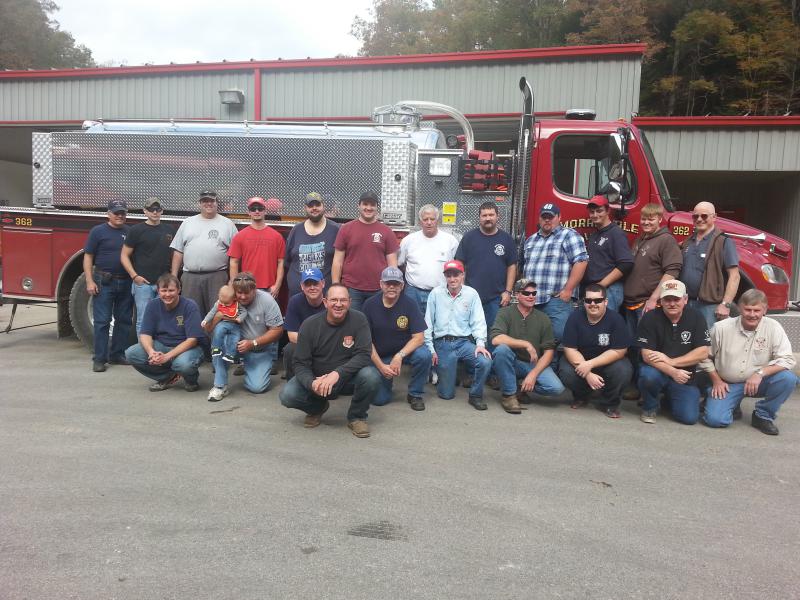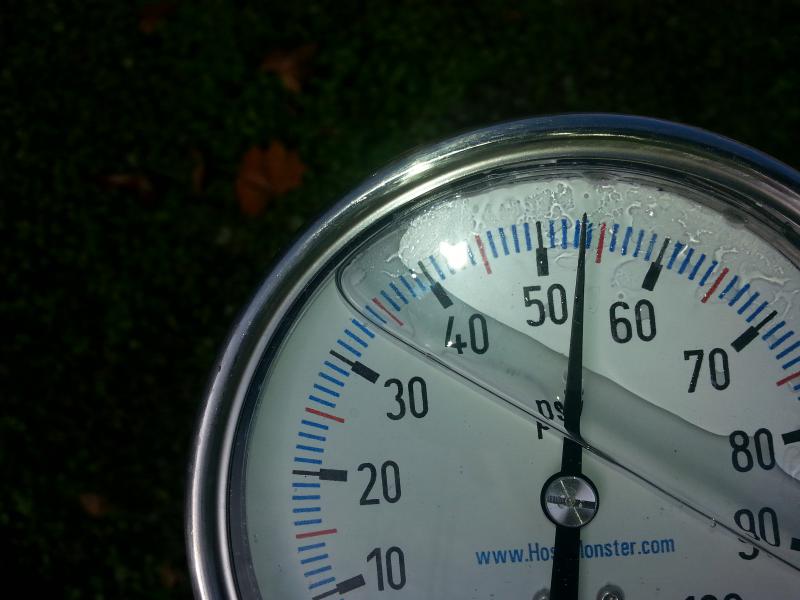| By Member Jason Estep | |
| November 1, 2014 | |
| The Southern West Virginia rural water supply drill was a great success, exceeding our expectations. Hosted by the Morrisvale VFD October 25, 2014, the drill lasted for 1 hr 45 minutes, during which time the average flow rate was 1,042 gpm. Flow was started at the 4-minute mark at nearly 1,300 gpm, to check the capacity of the pumper and dropped back to 584 gpm until the 15 minute mark when it was increased to 832 gpm. At 24 minutes, flow was upped to 1,012 gpm. The last 1 hr 11 minutes flow was sustained at 1204 gpm! Flow was never interupted during the drill and the 1,204 gpm was achieved with a 1,250 gpm pumper, while pumping 2 transfer lines and using only 1 suction hose on the pumper. The new Firovac low level strainers were used as transfer devices and as the strainer on the suction hose for the pumper. This same pumper maxed out at 862 gpm a few years ago while pumping multiple transfer lines. The Firovac strainers eliminated the need to use a second engine to pump the transfer lines, saving valuable resources. Two, 3,500 gallon dump tanks and two, 3,000 gallon dump tanks were used during the drill for a total capacity of 13,000 gallons of on-site storage. The lone fill site for the drill was located 1.35 miles away, making a 2.7 mile round trip. No fill site pumper was required as the 7 tankers involved were all vaccuum tankers. Four fill lines were used at the fill site, each of which had a vertical lift of approximately 13 feet. The tankers were filling in excess of 1,000 gpm at 3 of the 4 suction lines. After the drill was over, complaints were made that 1 fill line was taking a minute to 1.5 minutes longer to fill. During tear down, it was found that a gasket was missing from a suction hose connection. However this line still provided a fill rate of 750 gpm, even with an air leak! Nine firefighters were involved in fill site operations, including the tanker drivers. Not only does the vacuum tanker exceed the operational capabilities of conventional tankers, it saves our most valuable resource, manpower. The class began with a safety meeting and discussion of the planned drill. Safety topics were discussed and hilighted. A 45 MPH speed limit was implemented, although the average speed was probably 30-35 mph. Also discussed was that public traffic had the right of way during this drill and that tankers would be told when they could enter the roadway at both the fill and dump site. This was done by stationing someone at each site to direct tanker traffic - this procedure was very effective. Rural water delivery is all about efficiency. This drill proves how efficient we can become. Efficiency is about doing more with less, in this case moving more water with less people. Utilizing no fill site pumpers at the fill site and the simplicity of the vacuum tanker allow this efficiency. The new dump tank strainer developed by Firovac allowed us to use only 1 pumper at the fill site to reach 1200 gpm. Efficiency is about doing more with less, in this case moving more water with less people. Personally, this was the most efficient water delivery drill that I have participated in or observed. Seve tankers delivered an average of 1042 gpm for the duration of the drill, meaning that each tanker averaged 149 gpm on a 2 mile shuttle, during the 1 hr 11 minutes at 1204 gpm the average was 172 gpm per truck. Remember this was a 2.7 mile shuttle. I can't remember another drill that has produced this type of numbers. Also, Keep in mind that we did this with one fill line that was probably only 75% of capacity due to the air leak. We can all continue to gain efficiency through practice, new innovations and processes. I have seen this group that performed today continue to improve with each exercise. My question to the members of this site is: Are you truly efficient? Thank you to the Morrisvale VFD for hosting, to my mother Linda Estep for making lunch. Thank you to the Alum Creek VFD, Mud River VFD, Guyan River Vfd, Rt. 34 VFD, Buffalo VFD, and Colerain Twp (OH) VFD for attending |
|
| Units: | Guyan River tanker 663-2000 gallon Route 34 tanker 413-2600 gallon Mud River tanker 162-2000 gallon Firovac Demo- 3000 gallon Morrisvale Tanker 361- 2000 gallon Morrisvale Tanker 362- 2600 gallon / 1000 gpm Morrisvale tanker 363- 2000 gallon Morrisvale Engine 352- 1000 gal / 1250 gpm (dump site engine) Alum Creek VFD provided an apparatus for standby during drill. |
